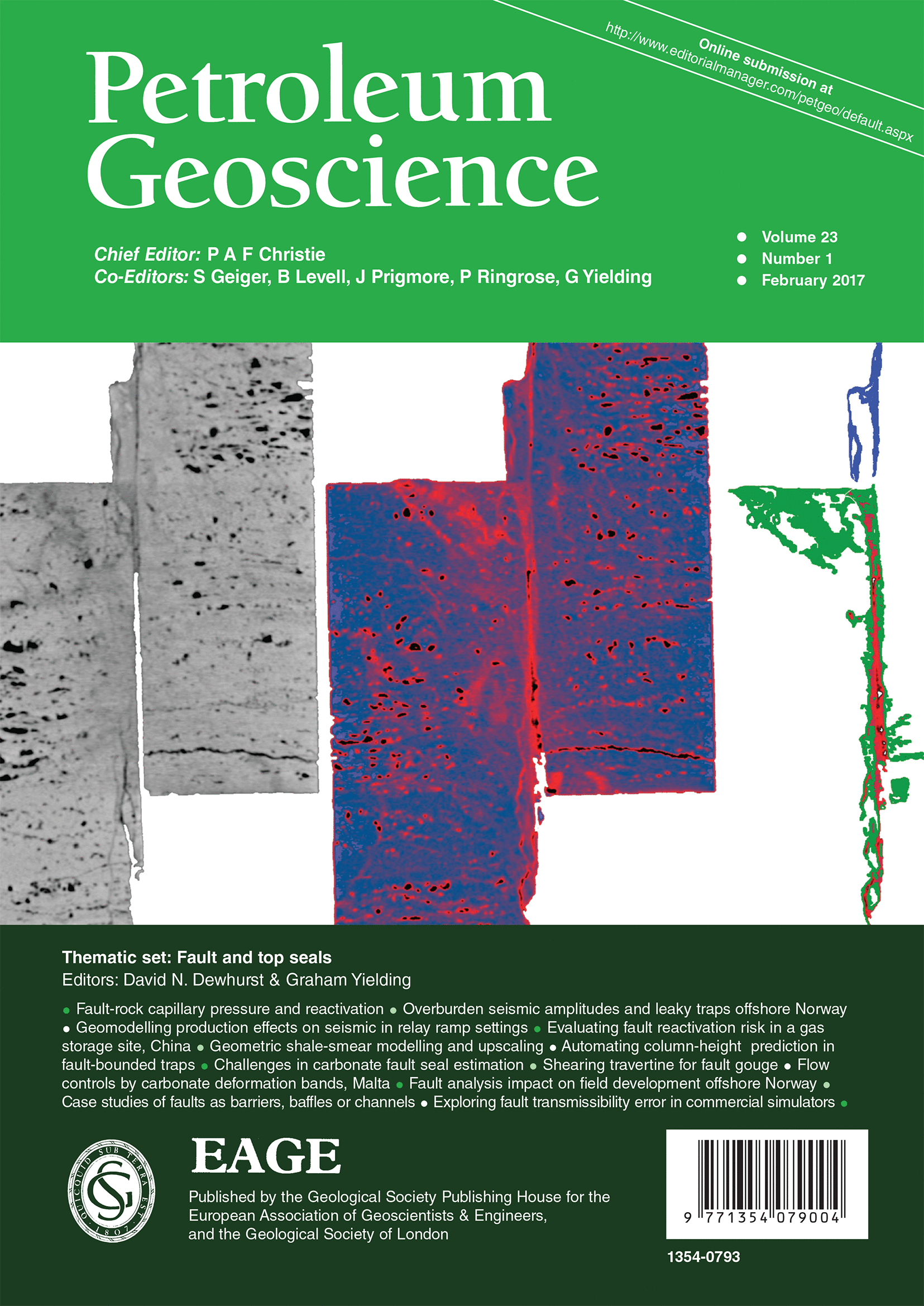
Full text loading...
Mechanical fault reactivation is a mechanism where high fluid pressures generated within a fault zone can change the effective stress such that an optimally orientated fault segment will rupture. This style of strain has been recognized in three settings: (1) deep crustal locations at greenschist and higher-grade metamorphism with fluid generation; (2) active plate boundaries where tectonic stresses can result in seismicity; and (3) hydrocarbon column buoyancy pressure reactivation of critically stressed fault-bound traps. This paper examines category 3 in the context of mechanical fault reactivation and capillary processes. For water-wetting fault rock, mechanical reactivation may be reached prior to the capillary seal capacity. However, the non-wetting fluid cannot access the fault rock pore space until the hydrocarbon column height reaches the capillary threshold pressure. At the threshold pressure, the non-wetting fluid enters the fault rock imparting a buoyancy pressure in excess of the mechanical reactivation threshold causing rupture. This suggests that in certain circumstances the mechanical fault reactivation by buoyancy pressure is more accurately predicted by the capillary threshold pressure than mechanical reactivation pressure.

Article metrics loading...

Full text loading...
References


Data & Media loading...

